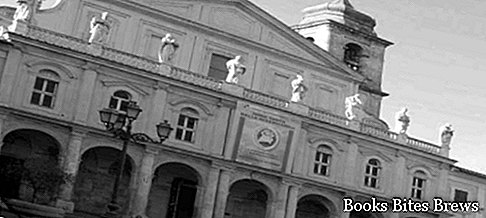What to see in Terni, itinerary including the main monuments and places of interest, including the Marmore waterfall, the remains of the ancient towers of the walls, the Cathedral of Santa Maria Assunta, the Church of San Francesco and the Basilica with the relics of San Valentino.
Tourist information
Terni is a city in Umbria, located in a basin surrounded by hills, at the confluence of the Serra river with the Nera river, in a territory rich in greenery and waters, for this reason in ancient times the name of the city was Interamna Nahars, which means between rivers.
A short distance from the city of Terni is the Marmore Falls, among the highest in Europe and created almost twenty-three centuries ago, which represents a spectacular work of transformation of nature created by human ingenuity.
In the territory where Terni stands today, human presence has been attested since the tenth century BC, as early as the first half of the third century BC, the inhabited area was in Roman orbit, in fact Terni was the seat of a thriving town hall, whose remains are preserved of the amphitheater and walls, near the former Roman gate.
In medieval times the walls were enlarged and reinforced, but only a few towers inserted in the modern urban fabric have survived to the present day.
The modern origins of Terni are based on a prosperous industrial activity in the steel and weapons sector that began at the end of the nineteenth century, followed by a destruction caused by heavy bombing during the Second World War.
With the reconstruction, the city took on the appearance of a modern city and today reflects a post-industrial society oriented towards reconversion and new development.
Piazza della Repubblica, with the nearby Piazza Solferino and Piazza Europa constitute the city center, while Corso Cornelio Tacito is the main street of the modern city.
What see
To visit the Cathedral dedicated to Santa Maria Assunta, few remains of its medieval structure following the renovations that took place in the sixteenth and seventeenth centuries.
The Church of San Francesco, built in the thirteenth century and modified around 1437, preserves remarkable frescoes by Bartolomeo di Tommaso in the Paradisi Chapel.
The San Salvatore Church, the oldest monument in the city, is located in the homonymous San Salvatore square, near Piazzale Europa, in front of the Spada palace, the seat of the municipality of Terni.
Recommended readings- Umbria: Sunday day trips
- Gualdo Tadino (Umbria): what to see
- Ferentillo (Umbria): what to see
- Orvieto (Umbria): what to see
- Castiglione del Lago (Umbria): what to see
The building is made up of two buildings attached, the original building with a circular plan, which dates back to the fifth and sixth centuries, and the rectangular forepart, which dates back to the twelfth century, inside there are some fine frescoes of the fourteenth century.
The Church of San Pietro in Trivio, rebuilt during the fourteenth century, has undergone various renovations since the 1703 earthquake and after the Second World War.
The Gothic portal of the facade remains of the fourteenth-century building, in whose tympanum stands a beautiful fifteenth-century relief, while in the single but large nave there are frescoes of the fifteenth and sixteenth centuries.
The Church of San Lorenzo, of Romanesque origin and enlarged in the seventeenth century, probably stands on the remains of an ancient Roman building.
In the square in front there are some medieval towers that are part of the Castelli houses, one of the most important noble families of Terni.
Do not forget that Terni is the birthplace of Valentine's Day, patron saint of lovers, its relics are kept in an urn under the main altar of the Basilica dedicated to him, on the Terni hill.




